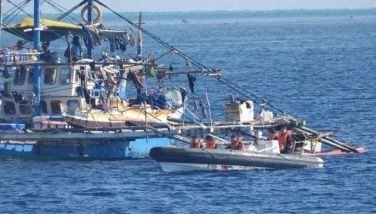City’s economic prospects in peril

Zamboanga City is proud to have the biggest and fastest-growing economy in the entire Zamboanga Peninsula.
According to the City Development Council, the local economy consistently grew by leaps and bounds from the pre-pandemic level of P125.05 billion to reach a record high gross domestic product of P139.47 billion in 2022.
Meanwhile, the Department of Information and Communications Technology (DICT) described Zamboanga City as a formidable force in the ICT map of Mindanao and the Philippines, a thriving and competitive location for digital jobs. It said that the size, quality and scalability of its human resource serves as a foundation of the city’s potential to effectively host small to large-scale companies that provide and perform ICT-driven services for international and local clients.
Additionally, the city is emerging as a key tourism destination in Western Mindanao, with approximately 690,000 tourist arrivals in 2023, representing a 14 percent increase from the previous year.
This growth can be largely attributed to a stable power supply, which continues to attract investors and enhance the region’s business and tourism landscapes.
However, the city and the entire peninsula are now vulnerable to power fluctuations and prolonged outages.
This is due to a delay by the Energy Regulatory Commission (ERC) in approving an ancillary services purchase agreement (ASPA) between the National Grid Corporation of the Philippines (NGCP) and Western Mindanao Power Corp. (WPMC), which is crucial for sustaining the power requirements of the Mindanao grid and ensuring a consistent electricity supply.
The said contract was awarded to WMPC on April 18 last year through a competitive selection process (CSP) which is mandated by the Department of Energy for the procurement of electric power supply by all distribution utilities.
WPMC operates a 100-megawatt diesel power plant that is a primary provider of electricity to Zamboanga City and the only major power plant within the city.
However, the inaction by the Energy Regulatory Commission (ERC) on the contract is now threatening the reliability not only of the city’s power supply but that of the entire peninsula as well.
Such ASPAs require the issuance of a provisional authority from the ERC before they can be implemented in the meantime that the regulatory body determines whether the NGCP has complied with the ancillary service CSP requirements for the said ASPA.
The Zamboanga Chamber of Commerce and Industry Foundation has warned that the city is at risk of power fluctuations and outages due to the delay in the approval of the awarded ASPA. This would adversely affect the local economy and inconvenience residents, particularly during periods of increased power demand.
Zamboanga City serves as the industrial and commercial hub of the Zamboanga Peninsula, playing a key role in trade and commerce across Mindanao. It hosts numerous businesses in the Zamboanga City Special Economic Zone Authority and Freeport, a vital economic center that stimulates regional economic activity. These businesses rely on a stable power supply for their operations.
In a social media post, Zamboanga City Electric Cooperative, the city’s primary distributor of electricity, has also highlighted the vital role of the ASPA between WMPC and NGCP in maintaining a stable power supply not only in Zamboanga but in the entire Mindanao Grid.
City mayor John Dalipe, in a letter to the ERC, meanwhile, emphasized the importance of these services in preventing outages and voltage fluctuations that could damage electrical equipment and severely impact the local economy and the residents’ quality of life.
Zamboanga City is situated at the end of the Mindanao grid. Due to its considerable distance of approximately 300 km from the Balo-I and AGUS5 substations in Lanao del Norte, the city experiences significant voltage drops during peak hours. Given this scenario, WMPC has been contracted by the NGCP to provide the necessary reactive power supply to compensate for voltage losses along the transmission lines, a critical need given the distance between city’s electric distribution utility and its power suppliers.
At present, NGCP has assigned WMPC as a must run unit to continue providing the necessary ancillary services needed for a stable power supply in the area while awaiting for the ERC’s approval of the awarded ASPA.
The power outage in Panay in January of this year resulted in economic losses of P3.8 billion to the Iloilo province. In Zamboanga, an hour of power outage can cause approximately P5 million to P14 million in economic losses.
A stable power supply is essential for a region’s growth and development. It not only drives economic activity by empowering industries and businesses, but it also attracts investments by providing a reliable infrastructure for new and expanding companies. Furthermore, a consistent and dependable power supply improves an area’s appeal as a tourist destination, thus, creating opportunities for the city’s residents.
For comments, e-mail at [email protected]
- Latest
- Trending



























